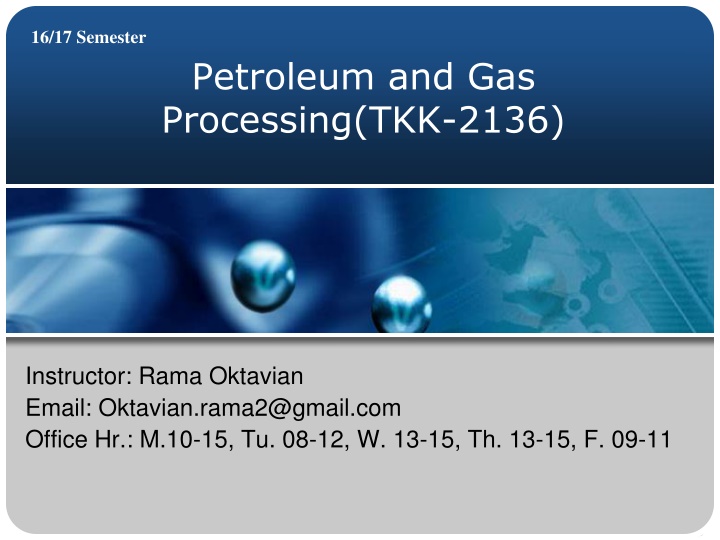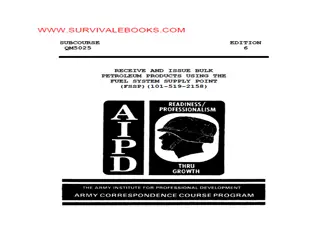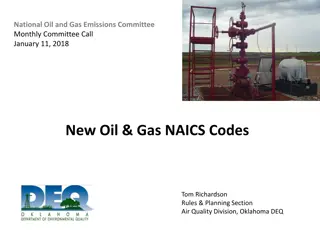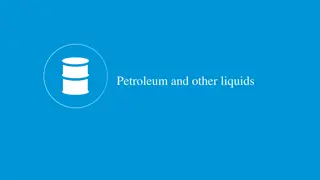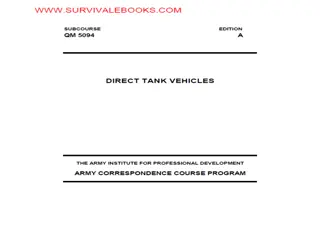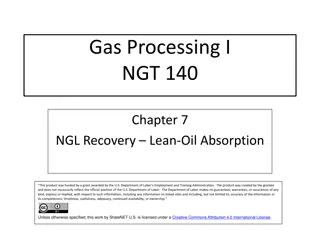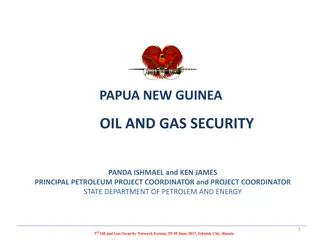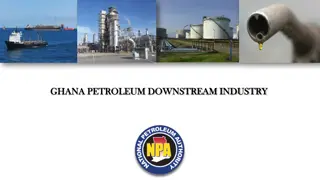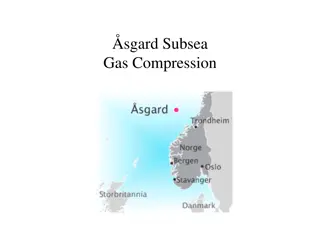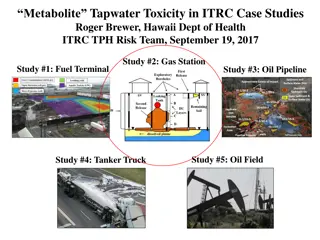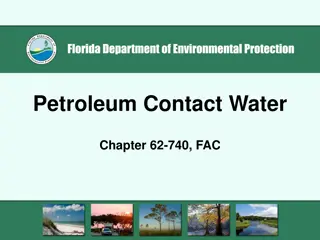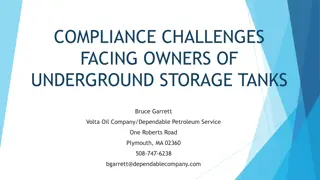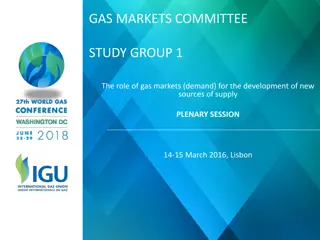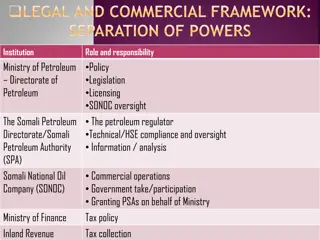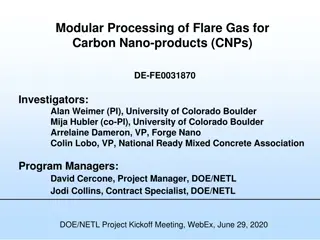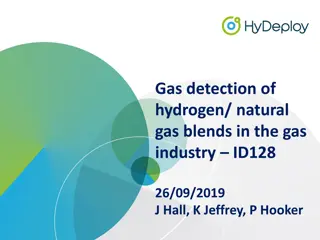Petroleum and Gas Processing - Semester TKK-2136
This course, taught by Instructor Rama Oktavian, focuses on the processing of petroleum and gas. Covering key aspects such as refining techniques, exploration methods, and industry standards, students will gain a comprehensive understanding of the field. With a mix of theory and practical applications, learners will be equipped to pursue careers in the petroleum and gas industry.
Download Presentation

Please find below an Image/Link to download the presentation.
The content on the website is provided AS IS for your information and personal use only. It may not be sold, licensed, or shared on other websites without obtaining consent from the author.If you encounter any issues during the download, it is possible that the publisher has removed the file from their server.
You are allowed to download the files provided on this website for personal or commercial use, subject to the condition that they are used lawfully. All files are the property of their respective owners.
The content on the website is provided AS IS for your information and personal use only. It may not be sold, licensed, or shared on other websites without obtaining consent from the author.
E N D
Presentation Transcript
16/17 Semester Petroleum and Gas Processing(TKK-2136) Instructor: Rama Oktavian Email: Oktavian.rama2@gmail.com Office Hr.: M.10-15, Tu. 08-12, W. 13-15, Th. 13-15, F. 09-11
Outlines 1. Hydroconversion 2. Hydrotreating 3. Hydrocracking
Hydroconversion Introduction Introduction Hydroconversion is a term used to describe all different processes in which hydrocarbon reacts with hydrogen. To describe the process of the removal of sulphur, nitrogen and metal impurities in the feedstock by hydrogen in the presence of a catalyst. Hydrotreating The process of catalytic cracking of feedstock to products with lower boiling points by reacting them with hydrogen. Hydrocracking aromatics are saturated by hydrogen to the corresponding naphthenes. Hydrogenation
Hydrotreating Objectives of Hydrotreating 1. Removing impurities, such as sulphur, nitrogen and oxygen for the control of a final product specification or for the preparation of feed for further processing. 2. Removal of metals, usually in a separate guard catalytic reactor when the organo-metallic compounds are hydrogenated and decomposed, resulting in metal deposition on the catalyst pores. 3. Saturation of olefins and their unstable compounds.
Hydrotreating HT are located before the reformer, hydrocracker and FCC They are also needed to adjust the final product specification for various streams, such as light naphtha, kerosene and low sulphur fuel oils (LSFOs). Role of hydrotreating (HT) in the refinery
Hydrotreating Main role of hydrotreating 1. Meeting finished product specification. Kerosene, gas oil and lube oil desulphurization. Olefin saturation for stability improvement. Nitrogen removal. De-aromatization for kerosene to improve cetane number. Cetane number is the percentage of pure cetane in a blend of cetane and alpha-methyl-naphthalene. The latter matches the ignition quality of kerosene sample.
Hydrotreating Main role of hydrotreating 2. Feed preparation for downstream units: Naphtha is hydrotreated for removal of metal and sulphur. Sulphur, metal, polyaromatics and Conradson carbon removal from vacuum gas oil (VGO) to be used as FCC feed. Pretreatment of hydrocracking feed to reduce sulphur, nitrogen and aromatics.
Hydrotreating The main elements of a hydrotreating process 1. The liquid feed is mixed with hydrogen and fed into a heater and then fed into a fixed bed catalytic reactor. 2. The effluent is cooled and hydrogen-rich gas is separated using a high pressure separator.
Hydrotreating 3. Before the hydrogen is recycled, hydrogen sulphide can be removed using an amine scrubber. 4. Some of the recycle gas is also purged - To prevent the accumulation of light hydrocarbons (C1 C4) - To control hydrogen partial pressure.
Hydrotreating 5. The liquid effluent for the reactor is introduced to a fractionator for product separation.
Hydrotreating Operating Conditions The operating conditions of the hydrotreating processes pressure temperature catalyst loading feed flow rate hydrogen partial pressure
Hydrotreating Operating Conditions Increasing hydrogen partial pressure improves the removal of sulphur and nitrogen compounds and reduces coke formation. Higher temperatures will increase the reaction rate constant and improve the kinetics. However, excessive temperatures will lead to thermal cracking and coke formation. The space velocity is the reverse of reactor residence time (y). High space velocity results in low conversion, low hydrogen consumption and low coke formation.
Hydrotreating Operating Conditions
Hydrocracking Hydrocracking is a catalytic hydrogenation process in which high molecular weight feedstocks are converted and hydrogenated to lower molecular weight products. The catalyst used in hydrocracking is a bifunctional one. It is composed of a metallic part, which promotes hydrogenation, and an acid part, which promotes cracking. Hydrogenation removes impurities in the feed such as sulphur, nitrogen and metals. Cracking will break bonds, and the resulting unsaturated products are consequently hydrogenated into stable compounds.
Hydrocracking It is mainly used to produce middle distillates of low sulphur content such as kerosene and diesel. If mild hydrocracking is used, a LSFO can be produced. It has been used to remove wax by catalytic dewaxing and for aromatic removal by hydrogen saturation. This has been applied to the lube oil plants and is gradually replacing the old solvent dewaxing and aromatic solvent extraction.
Hydrocracking Feeds and Products VGO is the main feed for hydrocrakers
Hydrocracking Hydrocracking Catalysts The cracking function is provided by an acidic support, whereas the hydrogenation dehydrogenation function is provided by active metals.
Hydrocracking Hydrocracking Process yield (quantity), and the total economics of the process: 1. Process configuration: one stage (once-through or recycle) or two stages 2. Catalyst type 3. Operating condition (depends on process objective) - Conversion level - Maximization of certain product - Product quality - Catalyst cycle - Partial hydrogen pressure - Liquid hourly space velocity - Feed/hydrogen recycle ratio The following factors can affect operation (product quality),
Process Configuration Hydrocracking Simplified flow diagram of one-stage hydrocracking process with and without recycle In commercial hydrocrackers, a conversion of 40 80% of the feed can be achieved. However if high conversion is required the product from the bottom of the distillation tower is recycled back to the reactor for complete conversion. This configuration can be used to maximize a diesel product, and it employs an amorphous catalyst.
Hydrocracking The catalyst in the first stage has a high hydrogenation/acidity ratio, causing sulphur and nitrogen removal Process Configuration In the second reactor, the catalyst used is of a low hydrogenation/acidity ratio in which naphtha production is maximized Conventional two- stage hydrocracker The effluent from the first stage reactor is sent to a separator and fractionator. The fractionator bottoms are sent to the second reactor.
Product blending The main purpose of product blending is to find the best way of mixing different intermediate products available from the refinery and some additives in order to adjust the product specifications. octane number, Reid vapour pressure (RVP) and volatility Gasoline diesel index, flash point, pour point and viscosity Diesel oil
Product blending The desired property PBlend where Pi is the value of the property of component i and qi is the mass, volume or molar flow rate of component i contributing to the total amount of the finished product.
Product blending Reid Vapor Pressure the vapour pressure at 100 F of a product determined in a volume of air four times the liquid volume. RVP blending index
Product blending Gasoline octane number blending Octane number is a measure of a fuel s tendency to knock in a test engine compared to other fuels. Octane number blend
Product blending Oxygenated compound to increase octane number
